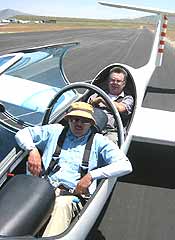Grob ARCO Sailplane

The G-103 A Twin II was the successor of the Twin Astir with a fixed six-inch main gear fitted behind the center of gravity in a fairing and a nose wheel. The main wheel is equipped with a hydraulic brake. Modified ailerons produce a substantially improved roll response. Approach control is by top surface airbrake's. The Twin II won the world Out & Return record for two-seat sailplanes (621.92 miles) flown by Tom Knauff of the U.S. The Twin II Acro is similar to the earlier model, but with strengthened main spar caps and steel control push rod which permit greater aerobatic performance. The Royal Air Force acquired 100 Acro's (known as the Viking T. MK.1) for its air cadet training program. The G 103 has a FAA approved modification kit for all-hand control for handicapped operation. ATC.
Monarch Butterfly 'Motor glider'
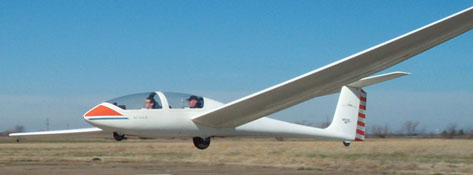 The
Grob 103 ACRO is a 2 - seat, fiberglass, glider considered to
have gentle enough flying characteristics to be used for training
purposes but is also certified for aerobatics.
The
Grob 103 ACRO is a 2 - seat, fiberglass, glider considered to
have gentle enough flying characteristics to be used for training
purposes but is also certified for aerobatics.
The best L/D (glide ratio) is 37:1 at an airspeed of 65.5 mph, compared to about 3.6:1 for a Monarch butterfly at an airspeed of about 5 kts (6 mph). However, minimum sinking rates, which determine the speed at which both 'aircraft' will ascend in thermals are 2 ft/s for both the glider and the butterfly. In other words, if the butterfly and the glider are gliding at the same altitude, say 984 ft above the ground, and both enter the same thermal at the same time and begin to circle in 3 m/s lift, the two will soar upward together at the same rate. As is often the case in aviation, rates of climb in strong thermals are largely independent of aerodynamic design.
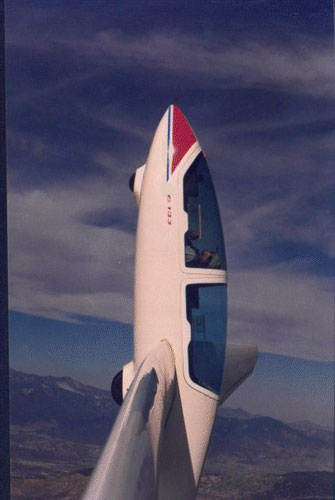
Lets assume that both leave the thermal at 4921 feet above the ground. Since butterfly and glider entered the thermal at the same altitude, 984 ft above the ground, each will have to circle for about 9 minutes to climb the additional 3937 feet. At this point, the superior aerodynamics of the the glider finally makes a difference. Due to its greater size, higher wing loading, more efficient wing design (fewer constraints), and lower coefficient of drag (fewer constraints again). While the glider can speed off at 57 kts and glide for 34 miles in search of a thermal before the pilot is forced to land, the departing butterfly, flying at only 5 kts, can glide just 3 miles before running out of altitude and either landing, or switching to muscle power and continuing on by flapping its wings.
The Grob 103 has been designed for soaring cross-country. It climbs quickly in thermals and can fly a good distance at a relatively high speeds before the pilot has to pause and circle in another thermal to regain lost altitude. The high airspeed of the Grob allows a pilot to make progress under a wide array of crosswind conditions and even to to make reasonable progress up wind. These traits greatly expand the tactics available to glider pilots. For example, glider pilots planning an out and return flight will usually try to select a route that takes them up wind during the middle of the day, when thermals are likely to be both abundant and strong, and to make the return leg a downwind dash during the late afternoon when thermals are fading.
As thermals begin to fade and soaring conditions deteriorate, the pilot can make much better progress gliding in a tail wind. Since thermals always drift downwind, even the time spent circling to gain, or even to just hold on and maintain, altitude still results in steady progress towards the airfield. In contrast, the monarch butterfly is a 'floater', optimized for keeping aloft by simply staying within thermals and drifting downwind. The low airspeed of the monarch butterflies limit their ability to compensate for crosswinds and almost eliminates the possibility of making progress by soaring cross-country against a head wind. In short, monarch butterflies are not well designed to travel continental distances to a defined location by soaring cross-country.
The fact that they manage to overcome their limitations as they make their way to the over wintering sites in Mexico each year, accomplishing a large part of the trip by soaring cross-country, makes their achievement all the more remarkable.
In the spring of 2002, Cam Martin (front seat) of Tehachipi, Ca, kindly offered to take Annie and me up in a Grob. Here we are getting ready for a great flight over the high desert. |
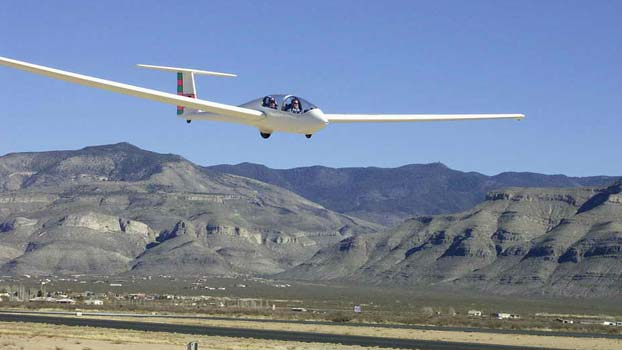 Landing back at Tehachapi after a one hour flight. |
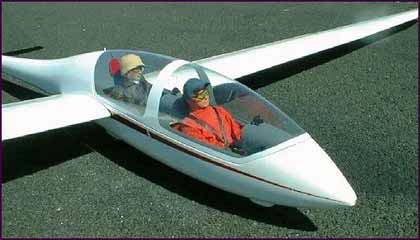 |
Specifications
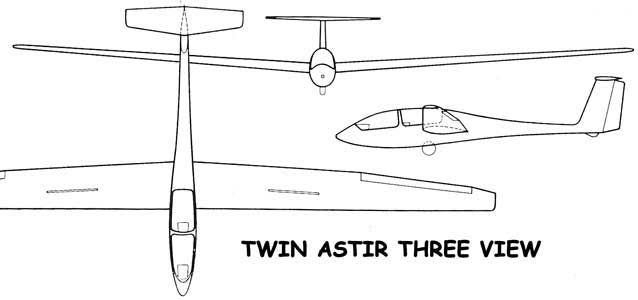 |
Wing Area 191.6 sq.ft. Aspect ratio 17.2 Airfoil: Eppler E 603 Empty weight: 811 lb. Payload: 468 lb. Gross weight: 1279 lb. Wing loading 6.67 lb./sq. ft. Structure GFRP and CFRP Performance Top Speed:155 mph L/D max: 65 mph Min. Sink: 2.45 fps Other Country of origin: Germany Designer: Buckhart Grob No. of seats 2 No. built 549 No. in the U.S. about 100 |
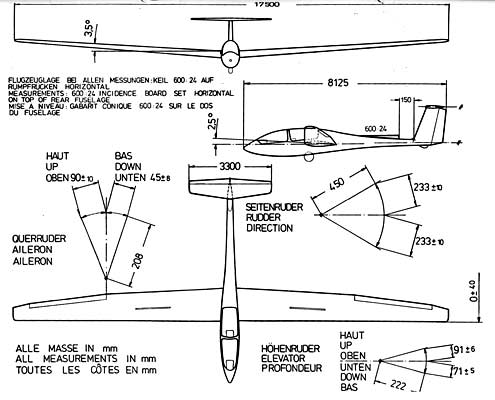
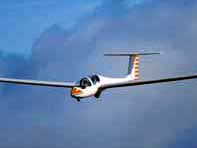 |
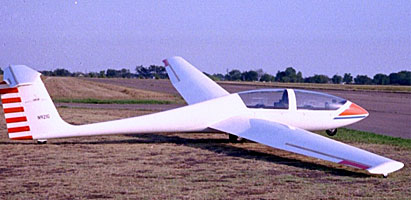 |
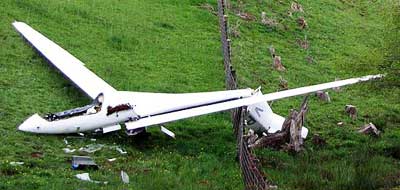 |
Never Exceed Speed (Vne), Indicated Air Speed (IAS) and True Air Speed (TAS) are closely linked, and if you don't understand how and why, they could have an effect on your BVDs. |


